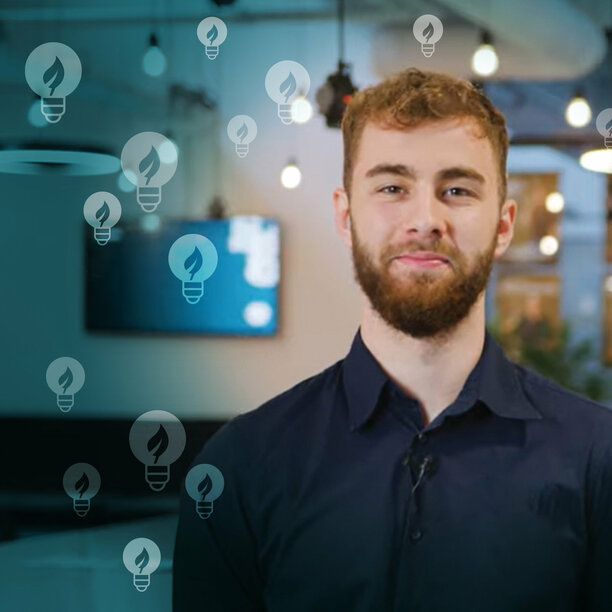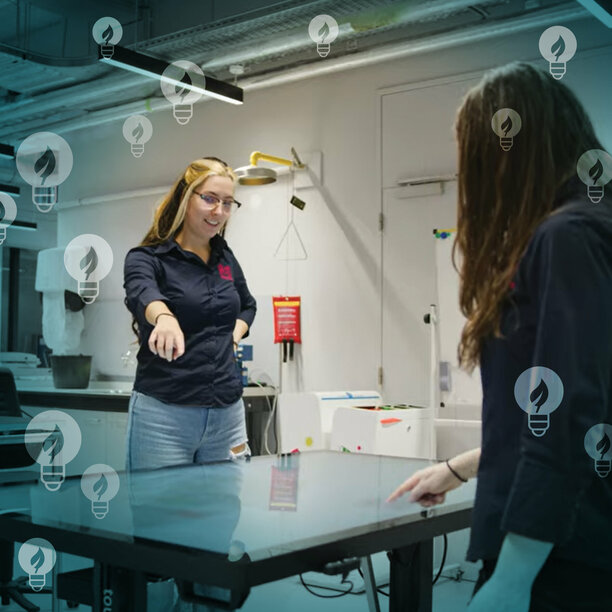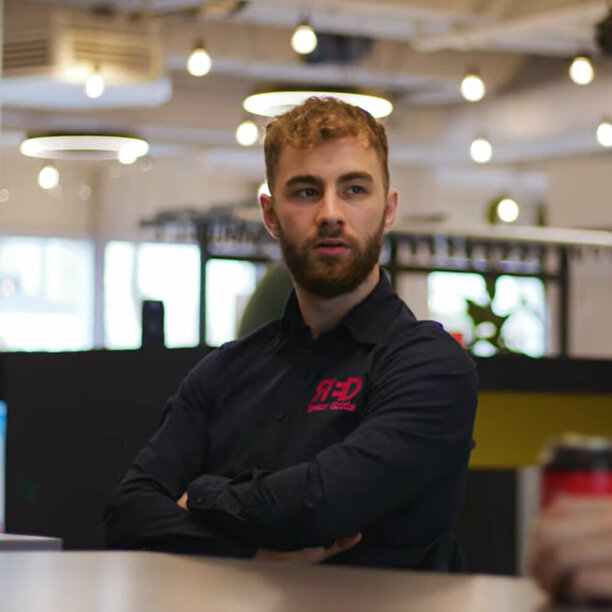Passion and competence
Ever since high school, TU/e Bachelor student Ruben Lathuy is fascinated by the notion of sustainability in relation to energy. After graduating in 2017, his choice for TU/e’s Sustainable Innovation course program thus was an easy one. Due to his excellent results, Ruben was invited to take part in the Honors Academy. There he joined team RED, a student team that wants to speed up the energy transition process by developing an interactive decision-support model that simulates the implementation of energy technologies.
Playing with possibilities
‘With team RED, we want to provide decision makers with easily accessible information about the consequences of implementing various energy technologies in the built environment,’ Lathuy explains. Last March, the team delivered its first model, which simulates the TU/e campus. This first product consists of a touchscreen monitor which depicts the campus buildings. By clicking on a building, users get more information about its energy consumption. They are also able to add small tokens which symbolize sustainable energy solutions, such as solar panels or batteries. The touchscreen immediately displays what adding such technology would mean both for the building itself and for the entire campus.
The nice thing about our model is that it gives a rather complete overview of these consequences,’ Lathuy says. ‘So we not only take into account weather data to calculate expected yields, but we also assess if for example the electric campus’ cables are powerful enough to cope with peak loads.’ The current version of the model incorporates solar panels and batteries. ‘A next step is to also include wind turbines and charging of electric vehicles,’ Lathuy says.’
Making a difference
Lathuy regards his membership of the student team as a valuable extra to his course program. ‘When I jumped in back in 2019, team RED had only just existed for about one year. I felt that I could really make a difference being part of such a young team.’ After being a team member for a year, Lathuy became team leader, a role he only vacated last January. ‘I’m almost done with my Bachelor, and looking around for opportunities where to pursue my Master. I thought this would be a good moment to pass on the leadership to my successor Niels Adaloudis.’
While staying involved in team RED as a member, Lathuy recently also joined another Eindhoven initiative called Go Green Office. ‘Since I only have to take one more exam, I had some free time on my hands. This appointment as Chief Education at Go Green Office seamlessly fits my experience, and enables me to make good use of the network I built during my time at team RED.’


